The next idea was to give Ron Perlman longer lower teeth than upper teeth, which ended up in the movie. He has huge fake teeth in the movie, but the lower ones are bigger than the top ones. Now, why did I want the lower teeth bigger? Hellboy has a really extreme lantern jaw in the comics [above left], and one of the ways Mike does it is by doing the lower teeth the way Jack Kirby did. Kirby used to have his bottom teeth come up above the lip in a straight line.
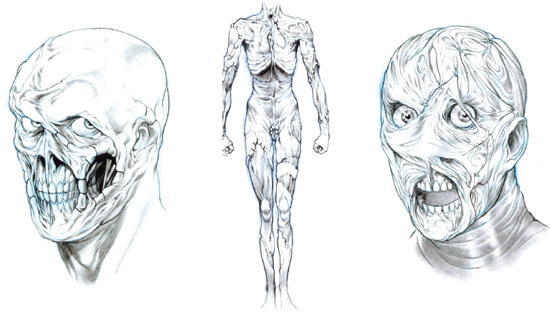
Sergio Sandoval at DDT elaborated on del Toro’s idea of a stitched-together, cadaverous being.
GDT: You can see [opposite], as strange as it is, I’m already trying to draw Hellboy like Ron Perlman. I’m trying to find a way. And there is a nick in the flesh of his cheek, which I wanted to be very, very deep. I couldn’t do it. But it’s the nick that Kroenen gives him in the final fight.
And I wanted Hellboy jumping between buildings with the moon silhouetting him. I didn’t do that.
This is pretty accurate to the way he looks in the Apocalypse, though—at the top of a mountain of debris, with the horns.
Then, in the center are Kroenen’s skin grafts. DDT was using these sketches, and they were becoming a little extreme. I was thinking, strangely enough, that Kroenen needed to be sexy. And I know an eyeless, lipless guy is not sexy, but I thought, “There needs to exist some kind of really, really, really twisted girl that is going to get off on Kroenen.” So I said, “For that, my minuscule audience, we have to make him sexy.”
Then there is the lock on the safe that needed a triangular key. It ended up being different in the movie, but it’s similar, and the key is triangular.
Then Mignola has Hellboy with sort of a ponytail. And in 2001, ponytails were, like, really for porn producers. So I gave Hellboy a Japanese sumo wrestler haircut that kind of indicated he had some fighter training. And, also, Mike has Hellboy with male pattern baldness, and I felt that was not very sexy, so I gave him the scalp shaving of a Japanese warrior. He shaves his head. So, all in all, I wanted Hellboy to keep to the comic but to be a little sexier.
MSZ: You’re dealing with so many design elements from the film right here in this one little compact area. As well as different parts of the film.
GDT: And there’s things from Mountains of Madness, too. Now, in Mountains of Madness, they wake up and time has been altered. A potato has sprouted. That’s in the movie. Cthulhu in the fog. It’s always more than two projects.
MSZ: That’s something you’ve alluded to—that when you’re working on a multitude of projects, if anything falls through on one, you’re, in a way, somewhat insulated because you’re working on multiple things.
GDT: When I concentrate on a single thing, that’s when I get blocked. What I find—and I’m not saying this works for everyone—is that the promiscuity of having four or five things online actually makes them feed each other. And you go, “Aha! That idea is great for Madness. That idea is great for…” And you keep them alive. It’s a dialogue.
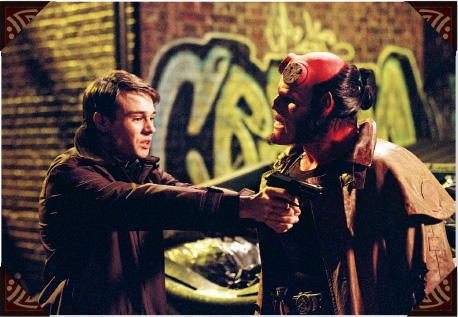
Del Toro tried to place Hellboy’s ponytail in a warrior tradition by giving the character a sumo wrestler haircut.
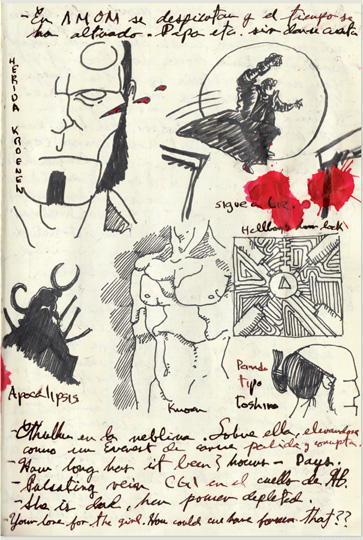
NOTEBOOK 3, PAGE 44B
–IN AMOM, they wake up to find time altered. Potato, etc. without realizing it
WOUND
CAUSED
BY
KROENEN
Follows Liz.
Hellboy door lock
Apocalypse
Kroenen
Toshiro hairstyle
–Cthulhu in the mist. Above it, rising like an Everest of pale, corrupt flesh.
–How long has it been? Hours—days.
–Pulsating vein CGI in HB’s neck.
–She is dead, her power depleted.
–Your love for the girl. How could we have foreseen that??
PAN’S LABYRINTH
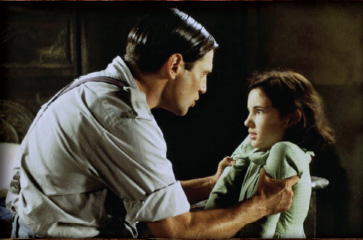
Vidal (Sergi López) threatens Ofelia (Ivana Baquero).
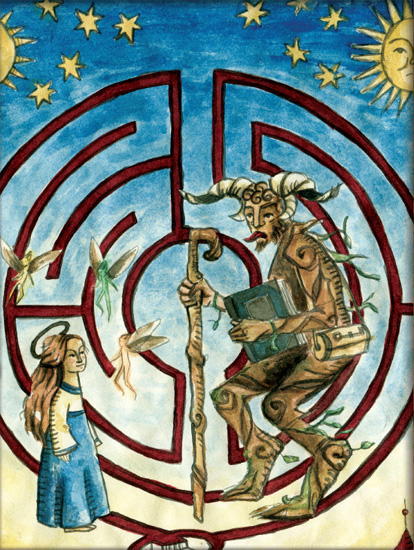
An illuminated drawing depicting the Faun, the princess, and the labyrinth.
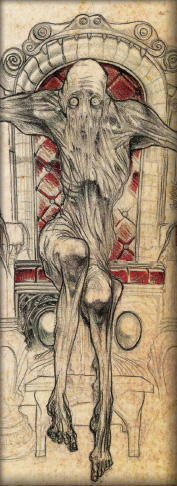
Concept of the Pale Man by Raúl Monge.
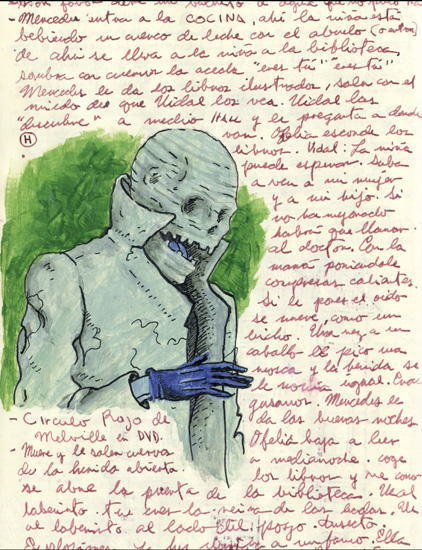
Notebook 4, Page 6A.

Ofelia (Baquero) in the forest.
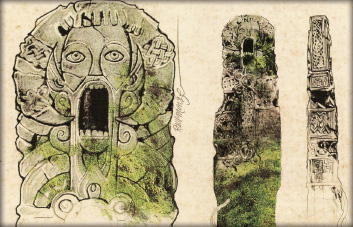
Concept of the main monolith by Monge.

Concept of the pit where Ofelia encounters the Faun in Pan’s Labyrinth by Raúl Monge and Raúl Villares. Sketches from del Toro’s fourth notebook.
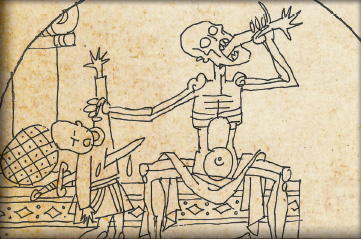
Study for one of the frescoes in the Pale Man’s lair by Carlos Jimenez.
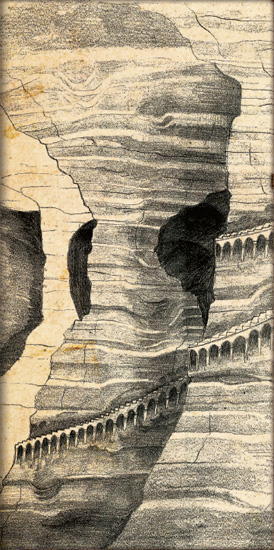
Concept of the subterranean city where Ofelia’s parents reign by Raúl Villares.
PAN’S LABYRINTH REPRESENTS Guillermo at the crossroads, “trying to redefine my life, creatively,” and choosing the right path—one of his own devising that led to a movie he needed to make. At this point in his career, he was turning down many top Hollywood offers, films that would have netted him millions of dollars. Instead, he chose financial struggle and artistic triumph.
In Pan’s Labyrinth (2006), everything Guillermo had been working toward came together in a grand panoply that is by turns brutal, gentle, intimate, and majestic. The notebooks he kept during this period reveal his consuming passion for the project. As he evolved the storyline and visual world of Pan’s Labyrinth in the notebooks, he laid bare all the specifics of the film, like a photograph emerging in a developing tray. He reflected on casting, historical background, specific shots, dialogue, sets, characters, costumes, and creatures. In these pages, Pan’s Labyrinth comes alive in glorious detail.
As Guillermo notes, paraphrasing and building on Heraclitus, “One never bathes in the same river or sees the same film twice.” He considered possible variations of every element of Pan’s Labyrinth and struggled to determine “which would the public understand more readily?” In this, Guillermo clearly grasps the difference between presenting mysteries that intrigue and beguile and simply failing to communicate one’s intent and confounding an audience.
“It’s only through art that you’re able to glimpse otherness,” Guillermo wrote, and everything we see in these detailed sketches and notations serves the goal of helping us see the alien as personal, familiar, and meaningful. In our daily lives we often insulate ourselves from what is unlike us, viewing otherness as threatening and ultimately rejecting it. But safe in our homes and theater seats, Guillermo’s art encourages us to consider the repulsive and the rejected with compassion and empathy—to expand our definitions of ourselves by encompassing the range of human (and even inhuman) experience.